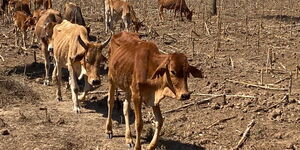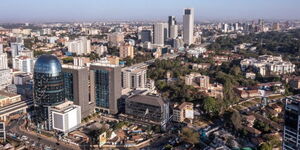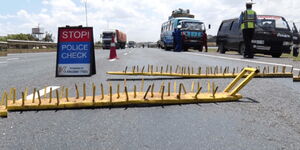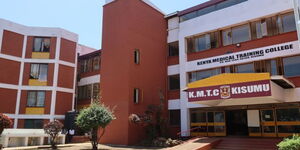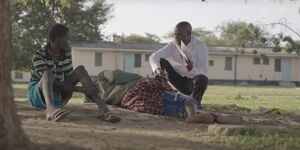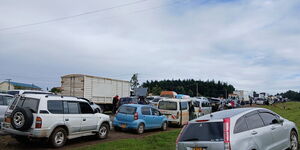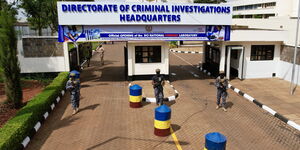Road carnage has claimed the lives of many Kenyans. But a growing trend of accident survivors becoming victims of robbery from thieves posing as good samaritans is worrying authorities and emergency responders.
The trend has emerged following numerous incidences including one in November 2020, where a woman had Ksh40,000 to settle a hospital bill in Meru.
She opted to use a boda boda to the hospital but unfortunately, the boda boda was hit by a speeding pick-up ferrying miraa. The rider died on the spot.
One of the first people who arrived at the scene stole the money she had at the time of the accident.
"A woman who was among those who came to the scene (of the accident) stole my wife's handbag. She pleaded with her not to take away the money as it was to pay for a patient's treatment but she took off with the cash," the husband of the woman was quoted by the Nation.
The woman, unfortunately, succumbed to her injuries later in the hospital.
Other Incidences of Good Samaritans Turned Thieves
Such incidences of thieves masquerading as good samaritans are common especially on roads that are known blackspots.
Many instances have been reported where locals rush to loot from trucks ferrying foodstuff, alcohol and fuel.
In January 2021, residents scrambled for oil after a truck ferrying petrol overturned and got stuck in a ditch along the Nyamataro-Daraja Mbili in Kisii.
Residents could be seen at the scene of the incident with jerricans and polythene bags, fetching the petrol from the tanker oblivious of the dangers.
{"preview_thumbnail":"/files/styles/video_embed_wysiwyg_preview/public/video_thumbnails/x7ykmth.jpg?itok=X1oZEPt8","video_url":"","settings":{"responsive":1,"width":"854","height":"480","autoplay":0},"settings_summary":["Embedded Video (Responsive)."]}
On the same day, a truck ferrying loaves of bread overturned at Mubau heading to Kanyoni Mang'u-Naivasha Road. Residents in the area made away with crates of bread from the truck.
The accidents took place just days after officers warned that there were robbers that have been colluding with truck drivers to execute planned robberies on the trucks.
The police warned that cases were prevalent along Nakuru-Nairobi Highway as well as the Naivasha-Mai Mahiu road.
"We have seen a trend where drivers are selling goods on transit, and later stage-managing a robbery along the major roads," Naivasha OCPD Samwel Waweru.
How do they do it?
The Sachangwan area along the Nakuru-Eldoret Highway is a known hotspot for road accidents. According to a resident, the youths are always on alert and are well-connected such that when an accident occurs, they are the first to arrive at the scene.
Posing as good samaritans out to help, they instead loot from accident victims and disappear before the police arrive. The dead are not spared either.
They mostly target mobile phones, money, side mirrors and luggage. A resident along Sachangwan area noted that joblessness drove most of them to the ‘risky’ habit.
“I do menial jobs and when I heard a tanker had overturned, I rushed to the scene with a container,” he stated.
A number of residents along the road stretch have been arrested for stealing from accident victims.
Kenya's Accident Statistics
According to the latest statistics by the National Transport and Safety Authority (NTSA), the number of fatalities between January and December 2020 stood at 3,663, compared to 3,508, during the same period in 2019.
The Transport authority observed that there was an annual increase of 9.4 percent in deaths.
The analysis indicated that most accidents are attributed to human-related factors such as speeding, reckless driving, dangerous overtaking, drunk driving, failure to use helmets among others.
The right thing to do as a first responder
When you get to the accident among the first people, your first instinct may be to rush and check on the victims. However, there are steps one can take to offer care to the victims.
St John Ambulance Head of Communications Fred Majiwa advises one to assess the scene for any dangers. For example, if the engine is still on, if there's a power cable connected to the vehicle and also alert incoming traffic on the accident ahead using the emergency triangles.
"Once the scene is safe, they can proceed to give first aid care and you should check on the unconcious victims first and check if they have problem with the airway," he explained to Kenyans.co.ke.
Majiwa added that one should tilt the head up to keep the airway clear. In the event the victim is bleeding, the responder is advised to apply pressure on the wound but only if they have gloves on.
"If you do not have gloves tell the casualty to apply pressure on the wound until bleeding stops and later find a clean clothe or bandage to wrap around the area to prevent infection," he notes.
For sensitive cases, where the victim has suffered a spinal injury it is advisable to have at least three trained professional rescuers at the scene.
Majiwa advises not to move them, "If they were on the chair, hold them there and stabilise them,"
"If you move them, the injury may compound and the victim may die," he notes.
As a responder, you can alert emergency teams to go to the site via St John Ambulance number 0721225285.
"While on the phone, provide as much information as you can and the official will guide you on basic first aid care as you wait for the ambulance to arrive," Majiwa advises.
After the casualties have been removed you must ensure the soiled material have been removed to prevent infection to others.


